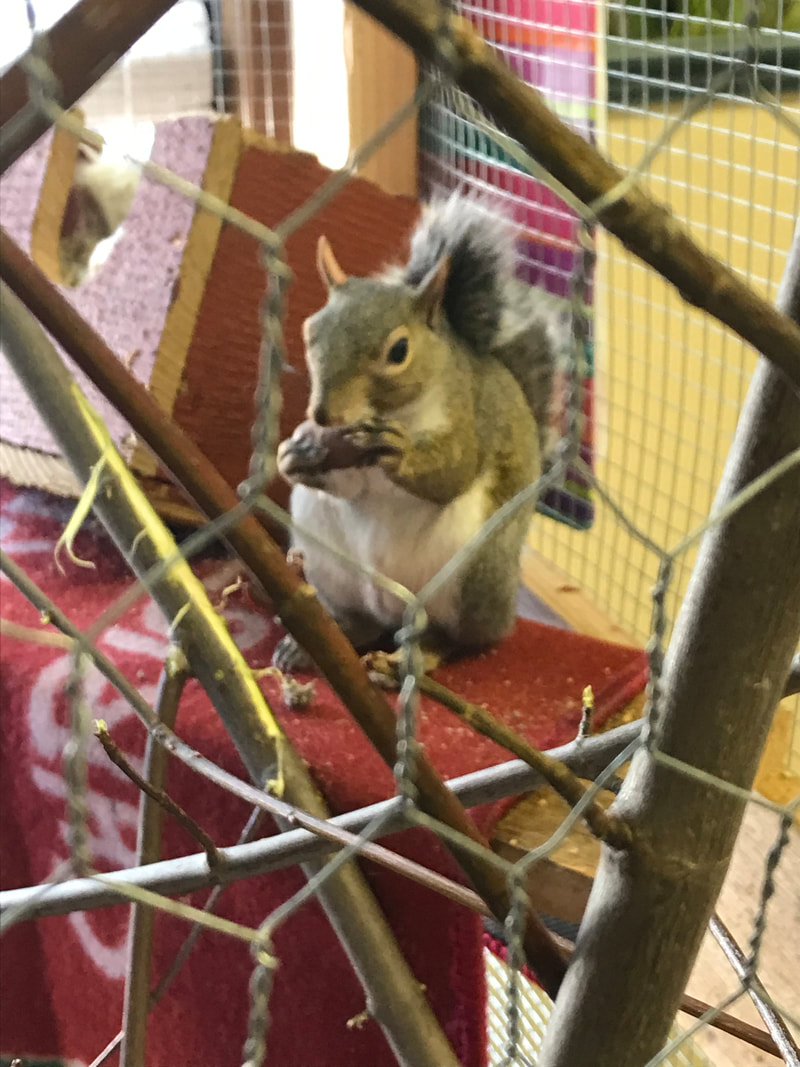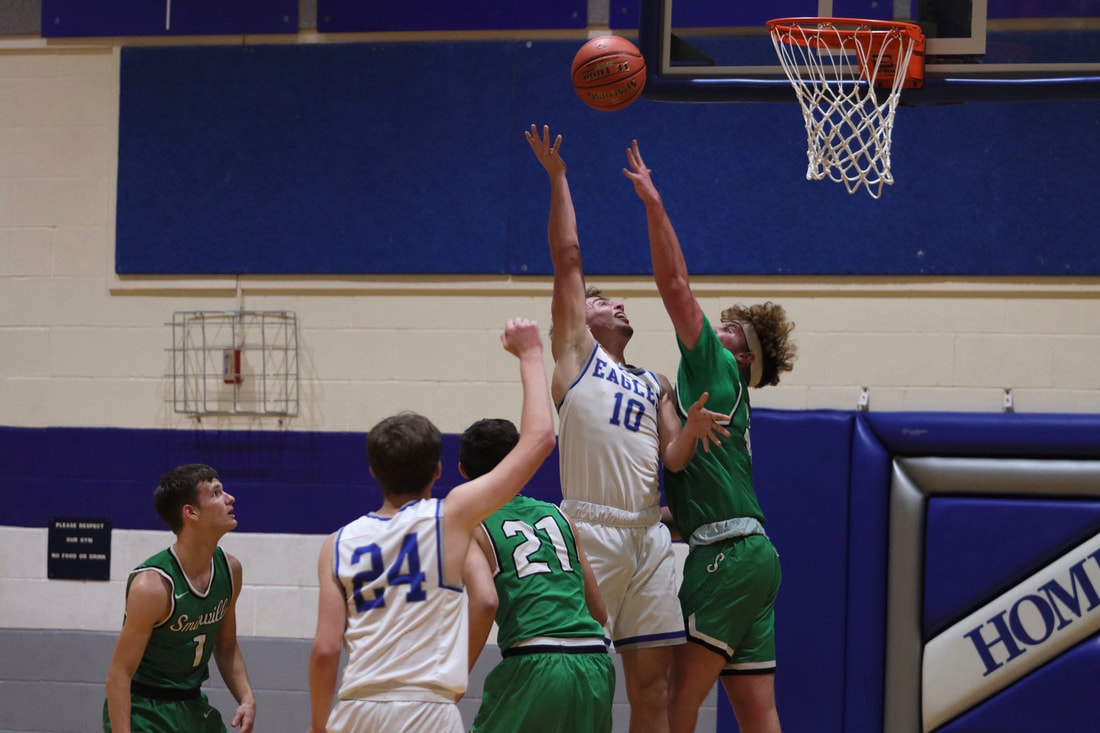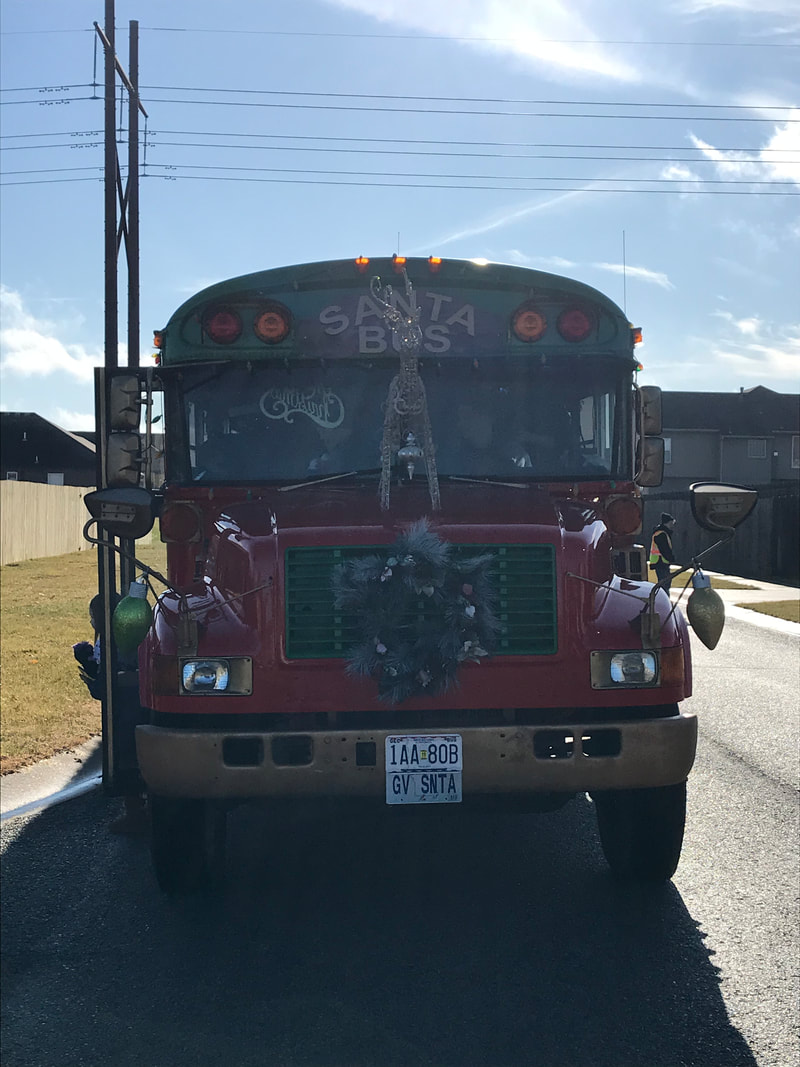|
|
One of the newest members of the Grain Valley Partnership is Wild Souls Wildlife Rescue and Rehabilitation in Oak Grove. One of only four wildlife rescue nonprofits in the state, Wild Souls is a free public service whose mission is to rescue, rehabilitate, and release Missouri native wildlife mammals while educating the public on humane wildlife conflicts, evictions, and exclusions in a manner to peacefully coexist. The 501c3 organization does not receive state or federal funding. Instead, Wild Souls relies on donations, fundraisers, and volunteer caregivers to rehabilitate the wildlife they rescue. Wild Souls Wildlife Rescue and Rehabilitation was established in November of 2017 (receiving their state permit in August of 2018) by founder April Hoffman. Hoffman has been a lifelong resident of Eastern Jackson County. She has seen her work grow to having eleven team members and a transporter (someone who delivers an animal to the nearest wildlife specialist in the case of immediate emergency assistance for particular species free of charge) in every surrounding town in the area. Hoffman’s work is definitely a labor of love. “Three years ago, I found some orphaned baby squirrels. I realized there was basically no where to take them in Missouri. You have to be educated and possess a state permit to rehab and release, so I started Wild Souls for the smaller communities of Eastern Jackson County,” Hoffman said. “I definitely enjoy the adrenaline rush that comes from pulling an injured owl out of a fence or a bobcat that’s been injured and needs assistance due to having a limp. To see the growth in our volunteers from the rare experience our work provides, and in witnessing the passion that comes alive from their work is rewarding.” Hoffman has logged 620 encounters of wildlife in need during the last twelve months. The exact number being known due to the reporting requirements of the Missouri Department of Conservation. That much work has not been without its hurdles to overcome. “Our biggest challenges have been finding volunteers, getting exposure, and people understanding wildlife rehabilitation and the responsibilities that come with it. I’m excited we are currently pulling from UCM (University of Central Missouri) students that are majoring in animal science or biology and they are getting hands on experience for their future career interests,” Hoffman said. “This is also not just about taking in animals and cuddling with them. These are wild animals that we are interested in getting back to their natural habitats.” Hoffman has also been motivated by increasing options to help support wildlife in need in the area and has paid her dues along the way. “My options when I found the orphaned squirrels on a weekend were to keep wildlife at my house for two days until the nature center in Kansas City opened up on Monday or drive to St. Louis to turn over the animals appropriately,” Hoffman said. “I flew around the United States for two years receiving the proper education at symposiums for consideration in receiving a permit. An apprenticeship was also completed by me at Lakeside Nature Center in Swope Park while working under their permit for a year before applying for our own.” Wild Souls has chosen to unite with the Grain Valley Partnership due to the connectedness of the area and what it views as the closeness of communities like Grain Valley, Oak Grove, and Odessa along the Interstate 70 corridor. Hoffman wants the growth of commerce and the education of her mission to happen in Eastern Jackson County. Especially, since the only other options in the state to support wildlife in the vision of her mission currently exist in Kansas City, St. Louis, and Columbia. Wild Souls has received 200 phone calls in the last year due to its partnership with Burr Oak Nature Center in being a 24 hour hotline. That number is expected to increase during baby season from February to July. Animals like squirrels, rabbits, opossums, foxes, and racoons become the highest intakes for Wild Souls during those months. To support Wild Souls in their effort in “Healing Wildlife and The Human Spirit” you may volunteer or donate online at www.wildsoulswildliferescuerehab.org. The organization may also be followed on Instagram or Facebook and by phone at 1-800-495-8403. April Hoffman founded Wild Souls Wildlife Rescue and Rehabilitation in Oak Grove in November 2017. Wild Souls is one of only four wildlife rescue nonprofits in the state. Photo credit: Valley News staff To support Wild Souls in their effort in “Healing Wildlife and The Human Spirit” you may volunteer or donate online at www.wildsoulswildliferescuerehab.org.
Photo credit: Valley News staff I’ve never been a huge fan of peppermint. I think it’s the mint part. I blame a friend of mine in middle school. He invited me to dinner, and they had lamb. His father insisted that I try it with mint jelly. It was an extremely unpleasant experience.
However, over time, I learned to appreciate a little mint. I especially enjoy the free Andes' Crème de Menthe mints which are specially made for Olive Garden. Keep the bread sticks and, instead, give me a handful of those bad boys. They are a simple mint comprised of two equal layers—one with chocolate and one with mint. It’s not overpowering and just a hint of mint. When it comes to eating candy canes, I will generally pass. I do find them beautiful in color and love to see them hanging on trees, but I’m just not a huge fan of the taste. Candy canes are considered to be a seasonal treat. It probably doesn’t surprise you that ninety percent of candy canes sold each year are purchased between Thanksgiving and New Year’s Day. They are the number one selling non-chocolate candy in the month of December. Many are used for decorations, but many are actually eaten. You should try them with lamb (just don’t invite me). If we saw someone eating a candy cane in mid-July, we might assume that someone had some leftover Christmas candy they needed to dispose of. According to the National Candy Association (yes there is such a thing and no they are not hiring), making candy canes is quite the detailed process. They are made by heating sugar and corn syrup in large kettles and then vacuum cooked. After heating, the candy mixture is poured on a cooling table and peppermint and starch are added to hold in the flavor and prevent the mixture from becoming too sticky. The mixture is then placed in a kneader. At this point, the mixture is a brownish color. Then, it is placed into a puller and, during this process, the candy turns bright white. Next, the circular shape is formed, the stripes are added, and the candy is cut and placed in wrappers—still warm. Last of all, they are bent into the shape of a shepherd’s cane. As difficult as they are to make, determining their history and purpose is somewhat of an intriguing mystery. Candy canes first appeared as a straight piece of candy and were entirely white in color. According to some sources, the candy cane underwent revision in the late 1670s. Tradition says, a choirmaster in Cologne Cathedral in Germany used the hard candy to try to keep the children quiet during the long service (good to know that even that long ago children were appeased with sugary treats). He even gave it the bend at the top to form it into a shepherd's staff. The candy cane did not make an appearance in the U.S. until the mid-1800s and underwent little change. By the 1920s, a man named Bob McCormack of Albany, Georgia began making candy canes as special Christmas treats for his own children and other friends around town. It was quite the undertaking for McCormack as the mixture had to be pulled, twisted, bent, and cut by hand. Most believe it was in the 1920s that the red stripes were added although no one really knows why. In the 1950s, McCormack’s brother-in-law, Gregory Keller, a Catholic priest, devised a process to automate the production of the candy cane thus opening up the opportunity for them to be created and consumed on a larger scale. The rest is history. Well, I guess all of that is history. Because of the ability to mass produce the candy cane, they went viral—and that was before the Internet. Candy canes are a cute, fun, and to some people, are a tasty treat. They’re relatively inexpensive and make a great decoration on the tree. But they can also be used for something more beautiful and meaningful. Although no one really knows exactly why the candy cane was created, there are some cites out there that claim that they were created to teach children about Jesus. I’m not sure if this is truly historical, but I would suggest that, entirely accurate or not, candy canes are a great way to teach children—and others—about Jesus. Here’s how: The Shape: Most candy canes are in the shape of a shepherd’s staff. The Bible says, “The Lord is my shepherd” (Psalm 23:1). Psalm 23 is a great reminder that God is a heavenly shepherd who takes care of His flock. In addition, Jesus said, “I am the good shepherd. The good shepherd lays down his life for the sheep” (John 10:11). Jesus is the Good Shepherd who leaves the 99 to rescue the wandering or missing lamb. Another interesting note, for English speaking people anyway, is that if you turn the candy cane upside down, it’s the letter “J” which stands for Jesus. It’s a great way to teach the little ones about Jesus, the Great Shepherd. The feel and smell of the candy cane: The candy cane is hard like a rock. Similarly, the Bible reminds us that Jesus is our rock. He is the foundation upon which we must build our lives and is also our fortress and protection. The Bible says, “The Lord is my rock, my fortress and my deliverer; my God is my rock, in whom I take refuge, my shield and the horn of my salvation, my stronghold” (Psalm 18:2). In Matthew 7, Jesus reminds us to build our lives upon the solid rock. The colors of the candy cane: Although originally white, candy canes are now generally red and white. The white reminds us of Jesus’s purity and holiness. The red represents the blood that Jesus shed for us on the cross. Interestingly, many candy canes have 3 thin stripes. No one knows when these were added. However, these 3 thin stripes have been used to talk about the “stripes” that Jesus bore. As Isaiah said, “But He was wounded for our transgressions, He was bruised for our iniquities; The chastisement for our peace was upon Him, And by His stripes we are healed” (Is 53:5). The stripes can also be used to illustrate the Father, Son, and Holy Spirit. Candy canes have a long, veiled, but interesting past. They can be used to express holiday cheer and make wonderful decorations. Candy canes are a part of the season and will likely be around for a long time. In addition, the candy cane can be used to bring glory to God and illustrate the true reason for the season—the true Lamb of God. Wayne Geiger is the Pastor of First Baptist Grain Valley, an Adjunct Associate Professor of Speech, and freelance writer. by John Unrein The Grain Valley Eagles Boys Basketball team was off and running in their home opener on Wednesday, December 11th as they defeated the Smithville Warriors by a score of 77-46. The transition game was paramount as the night progressed with Eagle rebounds leading to the ball being pushed up court to find open cutters to the hoop. Grain Valley was opportunistic in finding open shooters at the elbow and three point arc as well on the rare occasions when the basketball was stopped. Senior Point Guard Caden Matlon was an ace at ball handling and identifying cutters to pass to when he wasn’t finishing the scoring himself. Matlon finished with 11 points, 6 assists, and 2 steals. His knowledge of the offense and confidence to push the ball in the open court helped the Eagles to break away after only leading by five points after the first quarter. “I noticed early on that they intended to pressure me at the point. Josh (Kilpatrick) was able to get the basket with ease tonight and I knew we needed to start feeding him. His scoring also opened up the offense for other people to contribute,” Matlon said. “Us working on our transition game last night at practice helped us tonight. They are a pressing team and we like to get out and run as much as we can.” It is easy to tell that the game has slowed down for Matlon in how he handles the basketball and knowing where he wants it to go when passing. “My confidence has improved a lot over the past year and getting to play with Josh for three years now of varsity ball is special. Once one of us starts to score and get going it just eases everything else and we smile and feed off one another,” Matlon said. To say that Senior Forward Josh Kilpatrick fed off Matlon during the game would be an understatement. Kilpatrick had a superb night with a career high 35 points, 5 rebounds, and 1 assist. Just as impressive is how seamlessly Kilpatrick has transitioned from a wing player last year to a post player this season. Kilpatrick was solid at establishing his pivot foot and turning to the basket with ease while getting separation from the defender. No small task for someone who’s newer to the role of mixing it up in the paint. Kilpatrick credited the Eagles coaching staff in his post-game comments all while holding back a wry smile when asked about his performance. “We played good defense at the beginning of the game tonight. That lead to easy fast break points that got us going. My teammates were unselfish in passing the ball and putting me in a spot where I could score for the team and that boosted us throughout the game,” Kilpatrick said. “This offseason I worked on playing more inside because of some of the players that graduated and Cole (Keller) being injured right now. I’m trying to do as much as I can for my team and teammates. Coach Quintrell was a post guy and he pushes us to do our best and he’s been an inspiration to me. It’s definitely helped my game.” Grain Valley’s formula for victory also included effective rebounding due to boxing out under the basket. The confidence in understanding angles of approach to the basket as well as where other team members were on the floor helped the team’s efficiency in scoring. The Eagles mainly stayed in man defense throughout the game. Smithville tried to take advantage of that strategy by stretching the floor in looking to take open three point shots and identifying cutters to the bastket. The strategy did not yield the results Smithville wanted in the outcome of the game. Eagles Head Basketball Coach Andy Herbert was pleased with his team’s 31 point margin of victory while also identifying opportunities for improvement with his team moving forward. “We are at our best in transition when we get out and run. We haven’t got to do that much this year mostly because we haven’t been getting the ball in quick enough. Seth (Dankenbring) and Caden (Matlon) did a good job tonight of getting it going by being willing passers who understand the angles of the game. Compound that with getting the taste of if I sprint, I might get to score, and things become easier,” Herbert said. “The second half I was disappointed with how easy it was for Smithville to drive to the basket at times. We have plenty still to work on with our on the ball defense. Our rotation at times has also left us four on five defensively with a free runner to the rim if we don’t box out across the board.” Herbert continued with his thoughts on Kirkpatrick’s outstanding individual effort of scoring a career high 35 points. “Josh is such a relentless cutter without the basketball. He’s in constant movement. As a defender if you relax or don’t have the will to chase him all night, he’s open. That also makes him hard to block out if you are out of position as a defender. He’s worked extremely hard and I am obviously happy for him,” Herbert said. The Eagles will face their next opponent at home on Friday, December 13th when the Harrisonville Wildcats pay a visit. Senior Forward Gavin Oyler attempts a post shot underneath the basket. Photo credit: John Overstreet Senior Forward Josh Kilpatrick drives to the basket.
Photo credit: John Overstreet The Prairie Branch Elementary Student Council attended their 8th annual Toys for Tots field trip on November 26th. This year, the group raised $2,300 from a variety of events, including hat days, trunk or treat, and Easter egg sales. Funds raised were used to buy 232 toys for the US Marines Toys for Tots program. Students shopped together at Wal-Mart in Blue Springs and then traveled to Richards-Gebaur Air Force Base in Kansas City, Missouri to deliver the toys to Marines at the Toys for Tots Distribution Facility. Photo credit: Prairie Branch Elementary Student Council
Candidate filing for City of Grain Valley Board of Aldermen, Mayor, and the Grain Valley R-5 School District Board of Education begins December 17th.
The office of Mayor is open for candidates as are aldermen positions in each of the City’s three wards. In Ward 1, Jayci Stratton’s current seat is up for election. In Ward 2, Yolanda West’s seat is open, and in Ward 3, Bob Headley’s seat is open for election. Candidates for City offices may file for such offices during normal business hours (8:00am—5:00pm Monday through Friday) starting at 8:00am December 17th until 5:00pm on January 21, 2020 in the office of the City Clerk, 711 Main Street, Grain Valley. The opening date for filing a declaration of candidacy for the Grain Valley R-V Board of Education will be December 17, 2019, at 8:00 a.m. and the closing deadline will be January 21, 2020, at 5:00 p.m. Filing a declaration of candidacy may be done in the District Offices located at 31606 E. Pink Hill Rd. in Grain Valley, Missouri during regular office hours. The district offices will be closed on December 23, 2019 – January 3, 2020, and January 20, 2020 therefore, will not be accepting candidates filing on those dates. The district office will be closed, and filing will not occur on days in which the district is closed due to inclement weather. Three positions with three-year terms, currently held by Jeff Coleman, Tisha Homfeld, and Jan Reding, are up for election. The election will be held Tuesday, April 7, 2020. The Grain Valley Board of Aldermen unanimously voted to approve Ken Murphy as Interim City Administrator and Theresa Osenbaugh as Interim Deputy City Administrator during their meeting on Monday, December 7th. This vote shifted both Murphy and Osenbaugh’s titles from acting to interim administrators.
Among the resolutions unanimously passed by the board was R19-48, which adopted the Grain Valley Community Campus Master Plan as prepared by Sapp Design Architects. The board subsequently unanimously passed resolution R19-52 which authorizes the Interim City Administrator to enter into a contract amendment with SAPP Design Architects for services related to a schematic design for a municipal complex. This moves the city into phase II of the planning process at the Sni-A-Bar Farms property at the northwest corner of Sni-A-Bar and Buckner Tarsney Roads. The board also unanimously approved the 2020 fiscal year budget and comprehensive fee schedule for the City of Grain Valley as well as a conditional use permit for a concrete crushing and recycling facility. The facility would sit on 14.3 acres that is generally located at the northeast corner of McQuerry and Seymour Roads. A public hearing was conducted to allow any Grain Valley resident to come forward and speak for or against the conditional use permit before being voted on by the board. No one from audience elected to come forward and speak. The permit will grant Metro Recycle Concrete use for ten years in Grain Valley at the identified location. The company largely turns the crushed concrete into rock for roads and driveways along with recycling the steel rebar pulled from the concrete. The city also identified through the permit that hours of operation for the facility would be from 7am to 4pm Monday through Friday. Presentations given to the board included a YMCA Grain Valley feasibility study. YMCA representatives Mark Hulet and Gary Lynn presented study results and answered questions from the board. The study surveyed 300 households and found that 83% would support developing and funding a YMCA as part of the community campus at Sni-A-Bar Boulevard and Buckner Tarsney Road (assuming no tax increase). Hulet and Lynn shared that anticipated operating performa would include the need for 1,652 membership units across a two year ramp up period for the proposed 42,000 square foot facility. Other study objectives listed by the YMCA included market penetration levels for like service providers, Grain Valley Community Center and outdoor aquatic center usage, utilization of new Community Center/YMCA including of specific features and amenities (survey respondents identified cardio equipment, indoor pool, and walking track as three things they most wanted), demand for programs and services, importance and use of medically based programs, and community support of funding new development based on no increase in taxes. “One of the things that we are looking at is getting as big as draw as possible (for the city). The thought is having the partnership with the YMCA might broaden the base that would use the facility. There’s a price tag that comes with a proposed facility like this and there’s a needed membership to back that up,” Murphy said. The YMCA’s presentation to the board included a base indoor pool option for the facility as well as a secondary larger pool option. Both Grain Valley High School boys and girls swim teams currently practice at what was the Blue Springs YMCA. The facility was purchased by the Blue Springs School District and closed October 30th. “Through this whole process, Dr. Snow (Superintendent of Grain Valley Schools) has been on one of our steering committees for the Community Campus. We are all using the same tax dollars from the citizens of Grain Valley so we are trying to make sure that we are best using those dollars in working with the school district to see if there’s something we can do to accommodate them to where they are not using the Blue Springs facility indefinitely,” Murphy said. The base leisure indoor poll option would have zero entry and two water lap lanes and as one body of water that is family friendly. The other option presented that would increase price was a leisure pool and a separate four lap lane pool with a diving board and well. The second option would keep the two bodies of water at separate temperatures and add approximately 3,600 square feet to the building design. With phase one of the plan completed, Murphy and City staff look forward to the details to be worked out in the next phase of planning. “We have done phase one which is the layout and the site master plan. The next phase is seeing what those buildings might look like and what it would mean layout wise. The architects currently have only provided a footprint of a building. It’s about getting enough in a plan to educate moving forward without spending money that could be wasted,” Murphy said. The next scheduled meeting of the Grain Valley Board of Aldermen will be at City Hall on January 13, 2020 at 7:00pm. by Marcia Napier, Grain Valley Historical Society Four years after the Lewis & Clark Expedition of 1804, the federal government established an Indian outpost at Fort Osage to protect and promote trade with the Indians. Early pioneers began to settle in this area. Missouri became the twenty-first state on August 10, 1821 and in 1825 Jackson County was bought from the Osage tribe and divided into 9 townships. In 1834 Sni-a-Bar township was organized.
In 1842 Robert St. Clair brought his wife and 6 children from Kentucky. He was one of the first to record ownership of land in the area. In fact, he built a 12-room house on a 1000-acre farm in the area which became Pink Hill in 1854. In addition to the farm, Robert and his sons, Hasten and Charles, ran one of three general stores at Pink Hill In 1854 a post office was established in the store and Charles St. Clair carried the mail from Independence. That same year the first school house was built on the north end of Main Street. Later the post office was moved to another general store owned by J.W. Mann. That post office existed until 1903 when it was destroyed by fire. After that time, Pink Hill residents, depending upon their exact location, got their mail from Grain Valley, Oak Grove or Levasy. By 1854, when Pink Hill was chartered, several other families had come to the area, mostly from Virginia and Kentucky. As mentioned in the previous issue of Valley News, George Love and David Neer had the 10 acres surveyed when the town was established. Of course, R. G. Pinkard was there, along with Rosamah Sanders and Asa Booker and it is assumed that most were married men with families. In addition, Squire William Wells had a woodworking store and brothers Lee and Michael Womacks were the blacksmiths. The Historical Atlas of Jackson County also included Phillip and Tobe Starns’ woodworking store, A. G. Knight’s drug store, and three salons, one owned by Pinkard. Residential homes were owned by James Adams, Joseph E. W. Kabrick, Al and Lin Kent, Charley Phillips, George R. and Ann E. Carlyle, Mertie Blackburn, Jim Ed Mundy, Dr. J. D. Wood (later founder and president of the Bank of Independence) and Dr. O. C. Shelby The Chicago and Alton Railroad surveyed Pink Hill land, but the railroad never came. The Civil War came instead. Most of the citizens came to the area from Kentucky or Virginia. They were southern sympathizes making Quantrill and his men feel at home in Sni-a-Bar Township. The region had so many bushwhackers that Union forces never ventured into the area. On August 25, 1863, Union General Thomas Ewing, Jr. issued Order No. 11 forcing the evacuation of rural areas in four counties in western Missouri. Northern soldiers marched through Pink Hill, taking livestock, grain and food; burning homes and forcing everyone to leave. Virginia St. Clair Clarkson, one of those forced to leave, was quoted as saying “I stood on the front porch of the house and counted 13 chimneys, all that was left of 13 homes.” Residents moved to Lexington and other location to await the end of the war. Some returned to build tiny cabins to replace what had been plantation-like homes. Others never returned. The town existed for 24 years, from 1854 to 1878, the year the Chicago & Alton Railroad complete tracks to Kansas City. Grain Valley was established in 1878. The Historic Truman Courthouse, located at 112 W. Lexington in Independence, will be open from 8:00am – Noon on December 14th, December 21st, and December 28th for taxpayers to make in-person tax payments, obtain a copy of their bill, make changes to their account, or ask questions of the Assessment and Collection Departments.
For those on-the-go, the County offers a mobile and web-based application called myJacksonCounty. The program allows taxpayers to make a secure payment with a credit card, debit card or e-check with or without setting up an account. Taxpayers who choose to use the mobile device or web-based service are subject to a small fee charged by a third-party merchant, not Jackson County. The free app, myJacksonCounty, is available for download on Apple and Android devices via the iTunes App Store or Google Play App Store. It can also be found online at https://payments.jacksongov.org. The Department of Collection mailed tax bills during the month of November. Individuals who don’t receive a bill are still responsible for paying their taxes, which are due by the end of the year. Those who haven’t received a bill by December 10 should check their account online, call the Department of Collection at (816) 881-3232 or visit in person to find out the amount due. Payment Options: Online – To save time and avoid lines, taxpayers are encouraged to pay online or the mobile app via credit card, debit card or electronic check (E-Check). Online payments must be submitted by 11 p.m. on December 31 to avoid penalty pursuant to state law. Mail – Taxpayers can simply mail their payment to the address on their bill. Payments must be received or USPS postmarked by December 31 to avoid penalty. In Person – All forms of payment are accepted in person at the Department of Collection Offices at the Jackson County Courthouse in Kansas City (415 E. 12th Street) and the Historic Truman Courthouse in Independence during regular business hours. Extended weekend hours are only available at the historic courthouse in Independence. Drop Box – Drop boxes for property tax payments will be located at the west door of the Jackson County Courthouse in Kansas City and at the front door of the Historic Truman Courthouse in Independence beginning on December 28. Both drop boxes will close at midnight on December 31. Do not place cash in either drop box. What to Bring If Paying In Person: In-Person Payment – Taxpayers must bring their form of payment and their tax bill. If they don’t have a tax bill, they can visit the Department of Collection to have one printed. Taxpayers can also look up their account online and print the bill to avoid additional wait time. Grain Valley residents who are middle aged likely remember being taken to the mall or some community gathering for the chance to visit with Santa Claus. One of Grain Valley’s unique and great traditions is that Santa Claus will come to your neighborhood. Thus was the case for Jack and Daley Philbrick. The Santa Bus came to their neighborhood over this past weekend. They were able to meet jolly old Saint Nick and share with him their Christmas wishes. It’s a lot to take in for a kid of any age. There’s the police escort by VIPS (Volunteers in Police Service) making sure that everyone knows to be safe as Santa is seeing important guests traveling to the bus by foot. Not to mention the bright red and green paint job of the bus, complete with a reindeer on the hood and wreath on the grill. And if all of that is not enough, there’s the festively decorated inside of the bus with Kris Kringle ready to greet and meet visitors with a warm smile and belly chuckle. Jack and Daley’s Dad, Scott Philbrick, enjoyed watching his kids go through the Santa Bus experience. “This is a great thing that’s done for the kids. We wake up on Saturday morning and they are as excited as they are on Christmas Day in getting to meet Santa. We don’t have to leave our neighborhood to see Santa now because of this. Getting to avoid braving the crowds and traffic is a blessing due to the Santa Bus,” Philbrick said. “To have Volunteers In Police Service donate their time to make sure that this experience is safe is amazing in the peace of mind it provides to parents. It makes all the difference in the world to know I can stand and wait with an extra set of eyes looking out for us. I don’t know if you saw, but my kids ran across the street. They didn’t even look because they were so excited due to something else on their mind. This is just fun.” The Santa Bus originated with a few citizens and local businesses that wanted to make Christmas a little brighter for the children of Grain Valley. This Grain Valley holiday tradition has grown to nine dates on the Santa Bus calendar from November 30th to December 22nd. The duration of dates will include four 12 hour Saturdays and two 10 hour Sundays. The Santa Bus currently sees about 4,000 kids a year and gives out about 2,000 donated stuffed toys, candy, and small toys (for the kids too old for stuffed toys). Making this endeavor even more special is that it’s manned entirely by volunteers and supported by donations from local businesses and friends of the project. You may find a complete Santa Bus schedule at www.gvsanta.com and follow Santa’s travels on Facebook. Photo credit: Valley News staff Daley (left) and Jack (right) Philbrick with dad Scott Philbrick wait patiently outside the Santa Bus for their opportunity to visit with Santa.
Photo credit: Valley News staff by Marcia Napier, Grain Valley Historical Society On most Wednesdays you will find me at the Historical Society from 10:00am until 3:00pm. On a good Wednesday, I have a visitor. One Wednesday last spring, seven people came in to look around. That’s a record! About half of the time no one visits.
We have tons of “stuff” we have been collecting at the Historical Society since the early 1990s. Shortly after we moved into this building we received the entire collection of artifacts from the Pink Hill Historical Society, so on the days when no one visits I do lots of sorting which means I do lots of reading. For the next few weeks, I will be sharing some stories about Pink Hill. With the exception of the old Pink Hill Methodist Church, only farmland and newer homes cover all signs of what was once the thriving town of Pink Hill whose residents awaited the coming of the railroad. The railroad never came but the Civil War did and those two events destroyed the small town. In the early 1850’s, the Chicago and Alton Railroad surveyed land in Sni-a-Bar township. Blue Springs was the only town until November 21, 1854, when George Love and David Neer filed an Abstract in the office of John A. Sea for an area of ten acres off the west side of the northeast quarter of Section 24, Township 49, Range 30. There they established a town of 40 lots with a Main Street and a Locust Street each 33 feet wide plus two alleys 16 ½ feet wide. The area was one mile south of the old Spring Branch Road, now Truman Road. The town was built on property belonging to R. G. Pinkard, but did not honor him with the name Pink Hill. The suggestion for the name came from Robert St. Clair, who settled in Jackson County about 1848. Meeting with a group of men, he is credited with saying, “The land is covered with pink roses and pink verbena, it should be called Pink Hill.” According to Abstract notes, the first of the 40 lots was sold to Rosamah Sanders. Asa Booker purchased some of the lots the following year. The town was placed on the map by the United States Post office department in the same year, 1854. One history stated the Pink Hill Post Office was the second in Jackson county preceded only by Independence. (Other towns have made similar claims.) The first mail carrier, Charles St. Clair, brought honor to the town when he brought the first load of mail. He met the boat at the Sibley Landing and rode horseback overland to carry home the mail in a red bandanna handkerchief. Next Week: The citizens, their businesses and their homes. The Grain Valley Historical Society Museum is located at 506 South Main Street and online at www.grainvalleyhistory.com. |
Categories
All
Archives
April 2024
|
Grain Valley NewsGrain Valley News is a free community news source published weekly online. |
Contact Us |









 RSS Feed
RSS Feed
